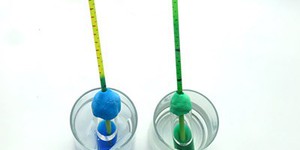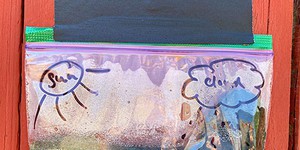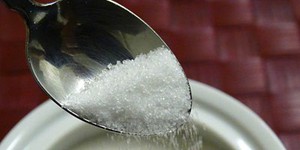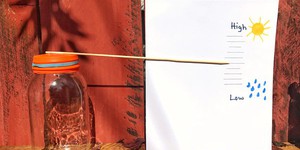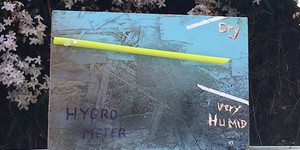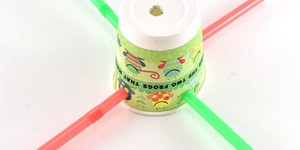Weather & Atmosphere STEM Activities for Kids (8 results)
Everybody talks about the weather, but nobody does anything about it.
- Charles Dudley Warner
Weather and atmospheric science offer lots of opportunities for interesting explorations. It's a satisfyingly complex area, with lots of online resources so you can make your project as easy or as advanced as you want. And when you're done, you'll have a science fair project everyone can talk about.
|
Select a resource
Sort by
|
STEM Activity
103 reviews
Are you eager to understand how everyday items work, or interested in making useful objects and instruments yourself? Have you ever imagined you could build your own thermometer? In this activity, you will make a liquid thermometer to track how temperatures vary with location, indoors or outdoors. What will turn out to be the hottest spot in your home? What about the coolest? Your very own homemade thermometer will be able to tell you!
Read more
STEM Activity
48 reviews
Have you ever wondered where the rain that falls from the sky comes from? You might say the rain falls from the clouds, but what are clouds and where do they come from? All these questions and many more can be answered by looking into how water moves on land and in the atmosphere, which is described in the water cycle. In this activity, you will investigate some of the processes that make water move in and out of the atmosphere by making a miniature water cycle model inside a plastic bag.
Read more
STEM Activity
20 reviews
Have you ever added a spoon of sugar to your tea and wondered why it disappeared? Where did it go? The sugar did not actually disappear—it changed from its solid form into a dissolved form in a process called chemical dissolution. The result is a tea-sugar mixture in which individual sugar molecules become uniformly distributed in the tea. But what happens if you increase the amount of sugar that you add to your tea? Does it still dissolve? In this science activity, you will find out how…
Read more
Featured
STEM Activity
60 reviews
Did you know that the seaweed you've seen in the ocean or even eaten as a snack is inspiring innovators to imagine new materials? Large
brown algae, like kelp, contains polymers—long chains of molecules—that are more environmentally friendly than the ones in most plastics. These natural polymers (alginates) could eventually be used to create sustainable everyday objects. Try your hand at using a bit of chemistry to turn biodegradable polymers from algae into your own custom…
Read more
STEM Activity
31 reviews
Have you ever seen a weather forecast on TV? If so, you might have noticed the letters "H" and "L" moving around on the weather map. They are often referred to as zones of "high pressure" (H) and "low pressure" (L). The pressure they are talking about is the atmospheric pressure. Changes in air pressure can forecast short-term changes in the weather. But how do you know if the air pressure changes, or if it is high or low? Scientists have developed an instrument called a barometer that can…
Read more
STEM Activity
14 reviews
Does your hair go frizzy during "April showers," when the weather turns damp? Strands of hair can relax and lengthen when the humidity (or the amount of water vapor in the air) increases, and then contract again when the humidity decreases. In fact, the rate of change in the length of hair strands is so dependable that they can actually be used as the basis for a hygrometer, a device that measures the humidity level in the air.
Read more
STEM Activity
16 reviews
Have you ever walked across a large parking lot on a sunny day and felt like you were roasting? That's because the asphalt gets really hot in the sun! Streets, buildings, and parking lots can get so hot that they raise the average temperature of urban areas by a few degrees. Do you think natural materials also heat up in the sun, or only man-made materials? Do this activity to find out!
Read more
STEM Activity
5 reviews
Have you ever thought about where the vegetables you eat are coming from when it is too cold outside to grow them? They might have been shipped from a different country to your home town, or they may have been grown locally in a greenhouse. Greenhouses are huge house-like structures that are usually made mostly of glass. How can they protect plants from the cold? In this activity, you will find out and create some extra heat from the sun.
Read more
STEM Activity
5 reviews
Have you ever wondered how wind is made? Wind is caused by a difference in air pressure. Air travels from areas of higher pressure to places where there is less pressure. And just as air flows out of the high-pressure inside an inflated balloon if the opening is not tied, air in the atmosphere will move to a lower pressure area, creating wind. The speed of that wind can be measured using a tool called an anemometer.
An anemometer looks like a weather vane, but instead of measuring which…
Read more
|
Explore Our Science Videos
Model the Planets of the Solar System
Brazil Nut Effect Explained
Obstacle-Avoiding: BlueBot Project #4


